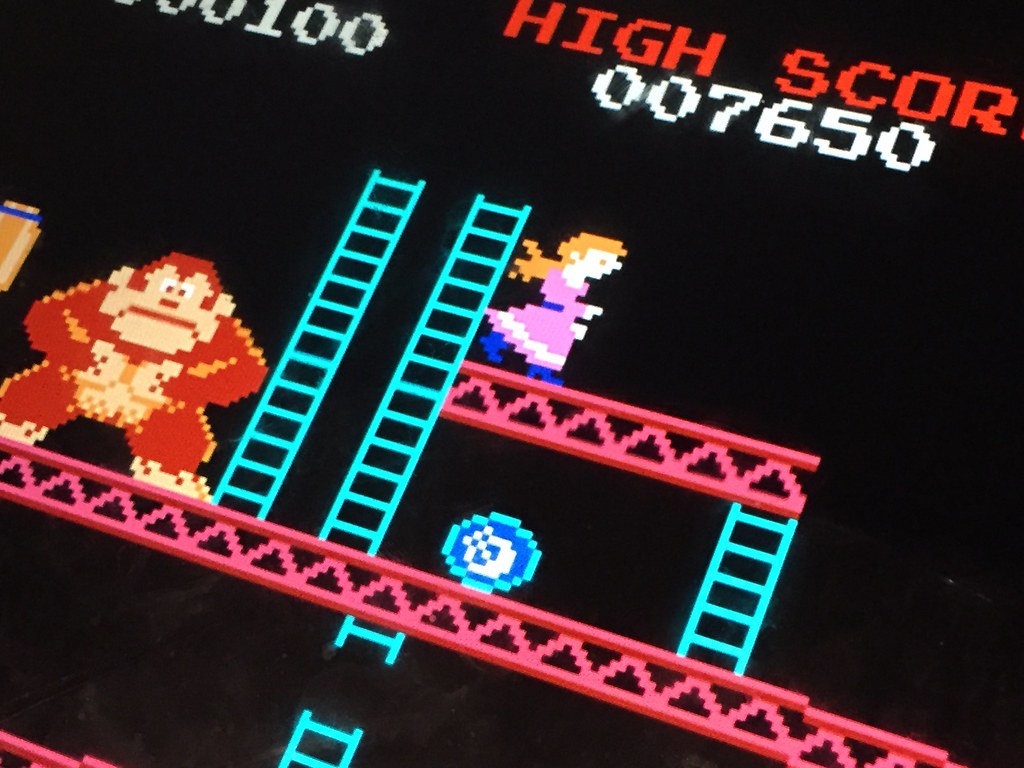Donkey Kong, an iconic video game that has left an indelible mark on the gaming industry, is a thrilling and action-packed arcade adventure that captivated players worldwide. Developed by Nintendo and released in 1981, this game not only revolutionized the platform genre but also introduced the world to one of the most beloved characters in gaming history – Mario. In this article, we will explore the genre and platforms on which Donkey Kong was released, delve into its gameplay mechanics and key features, analyze the critical reception and cultural impact it had, and finally, examine its sequels and other games that drew inspiration from this timeless classic.
Donkey Kong Genre and Platforms
Donkey Kong falls under the platform genre, which is characterized by its focus on guiding a player-controlled character through various levels or platforms, overcoming obstacles and enemies along the way. The game was initially released as an arcade machine, which added to its widespread popularity due to its accessibility in public places. As players fell in love with the thrilling gameplay and captivating characters, Nintendo made sure to expand the game’s reach to other platforms.
Soon after its arcade debut, Donkey Kong found its way to several home gaming systems of that era, including the Nintendo Entertainment System (NES), ColecoVision, Atari 2600, and more. This strategic move by Nintendo allowed the game to reach a broader audience and further solidify its status as a gaming phenomenon.

Gameplay:
The premise of Donkey Kong revolves around a simple yet engaging storyline. Players take on the role of Jumpman (later known as Mario), an intrepid carpenter, who embarks on a heroic journey to rescue his girlfriend, Pauline, from the clutches of the ferocious and mischievous Donkey Kong. The game is divided into four distinct levels, each with its own unique challenges and environments.
In the first level, players face off against the titular Donkey Kong, who hurls barrels down the platforms to thwart Jumpman’s rescue mission. The objective is to climb a series of ladders and platforms while avoiding obstacles and reaching the top to save Pauline.
As the game progresses, players encounter new challenges, such as flame-spewing Oil Drums and conveyor belts that add complexity to the gameplay. Each level requires precise timing, quick reflexes, and strategic thinking to overcome the obstacles and rescue Pauline.
Key Gameplay Features:
Donkey Kong’s gameplay was innovative for its time, introducing several key features that set it apart from other arcade games. These features contributed to the game’s enduring appeal and laid the foundation for future platformers.
- Multi-Level Gameplay: The game’s four distinct levels, each presenting a unique set of challenges, provided players with a sense of progression and accomplishment as they advanced through the stages.
- Dynamic Enemies: Donkey Kong’s clever AI-controlled enemies, such as the barrel-rolling Kong and the fire-starting Oil Drums, added an element of unpredictability to the gameplay, requiring players to adapt quickly.
- Limited Resources: Players were given a limited number of lives to complete the game, emphasizing the importance of careful decision-making and precise movements to avoid losing valuable attempts.
- Time Pressure: Completing each level required both skill and speed, as players had to rescue Pauline within a time limit. This time pressure heightened the game’s intensity and replay value.
- Climbing Mechanics: The ability to climb ladders and platforms was a unique gameplay element at the time, enabling players to navigate the levels efficiently and avoid obstacles.

Reviews and Cultural Impact:
Upon its release, Donkey Kong received widespread acclaim from both players and critics alike. Its compelling gameplay, charming characters, and challenging levels won the hearts of millions, making it a commercial success for Nintendo.
The game’s cultural impact was significant, leading to the establishment of several gaming milestones. Most notably, Donkey Kong introduced Mario, who would go on to become Nintendo’s mascot and one of the most recognizable characters in gaming history. Mario’s appearance in Donkey Kong marked the beginning of a legendary franchise that continues to thrive to this day.
Additionally, the success of Donkey Kong demonstrated the potential of video games as a viable entertainment medium. It helped dispel the notion that video games were a passing fad and laid the groundwork for the gaming industry’s exponential growth in the years to come.
Sequels and Examples of Similar Games:
Donkey Kong’s success paved the way for an array of sequels and spin-offs that continued to build on its legacy. Some of the most notable sequels and related games include:
- Donkey Kong Jr. (1982): This sequel puts players in control of Donkey Kong’s son, who must save his captive father from Mario’s clutches. The game introduced new gameplay mechanics, such as climbing vines, and further expanded the Donkey Kong universe.
- Donkey Kong Country (1994): A groundbreaking entry in the series, Donkey Kong Country featured revolutionary graphics and gameplay for its time. Developed by Rare for the Super Nintendo Entertainment System (SNES), it reinvented the Donkey Kong franchise and became a best-seller.
- Donkey Kong 64 (1999): This 3D platformer brought the series into the realm of 3D gaming, giving players a vast and immersive world to explore with multiple characters and objectives.
- Mario vs. Donkey Kong (2004): This puzzle-platformer for the Game Boy Advance and later systems featured Mario and Donkey Kong in a new rivalry, combining classic platforming elements with brain-teasing puzzles.
Examples of Similar Games:
Donkey Kong’s success inspired numerous other platformers that adopted its core gameplay mechanics and principles. Some of these notable games include:
- Mega Man (1987): Developed by Capcom, Mega Man featured challenging platforming levels and boss battles, encouraging players to strategize and adapt their playstyle.
- Sonic the Hedgehog (1991): Sega’s iconic blue blur, Sonic, offered fast-paced platforming with a focus on speed and exploration, appealing to a wide audience.
- Super Mario Bros. (1985): As the direct sequel to Donkey Kong, this game further solidified Mario’s status as a gaming legend, providing players with an unforgettable platforming experience.
- Rayman (1995): This visually stunning platformer by Ubisoft introduced players to a whimsical and fantastical world, featuring unique and engaging gameplay.
In conclusion, Donkey Kong is a timeless classic that has left an indelible mark on the gaming world. Its innovative gameplay, introduction of iconic characters like Mario, and cultural impact have made it an enduring and beloved title. The game’s success led to a series of sequels and inspired many other platformers that continue to influence the gaming industry today. As long as there are players who enjoy a challenging and thrilling adventure, Donkey Kong’s legacy will remain etched in gaming history.

